
Researchers have identified a mathematical trend in the evolution of COVID-19 cases and deaths in China and used it to predict a similar slowdown in Italy. By aligning with this curve, policymakers can create better containment strategies.
With the right approach, statistics can be used to reliably track the growth and fall in daily new cases of Covid-19 in China, raising hopes that similar approaches could more accurately predict the spread of the virus in other nations.
Efforts to contain the spread of the COVID-19 pandemic are now the top priority of governments across the globe. As they make these life-saving decisions, it is particularly crucial for policymakers to accurately predict how the spread of the virus will change over time. Through research published in EPJ Plus, Ignazio Ciufolini at the University of Salento, and Antonio Paolozzi at Sapienza University of Rome, identify a clear mathematical trend in the evolution of daily new cases and death numbers in China, and use the same curve to predict how a similar slowdown will unfold in Italy.
By aligning their strategies with predictions made by the curve, policymakers could be better equipped to draw out scientifically robust plans and timescales for their containment measures. Ciufolini and Paolozzi based their approach around a function commonly used in statistics to track changes in the total values of specific quantities over time. After fine-tuning the parameters defining the shape of their curve, they found that it closely approximated the evolution of daily new cases and deaths in official data from China, where COVID-19 has now been largely contained.
The researchers then used the same approach to predict the evolution of the two values in Italy, by fitting the initial part of their curve to the official data available as of March 29th. This allowed them to make informed predictions of when numbers of daily new cases and deaths will peak, and then begin to fall significantly. Furthermore, the duo strengthened the reliability of these predictions by incorporating their mathematics into Monte Carlo computer simulations, which they ran 150 times.
Ciufolini and Paolozzi acknowledge that their approach cannot account for real-world factors like numbers of daily nasopharyngeal swabs, social distancing, or the fact that real case numbers are likely far higher than those reported. They are now improving their algorithm’s predictions by considering how the number of individuals tested by swabs is now far higher in Italy than at the beginning of the infection. If the necessary precautions are taken by governments, and curve parameters tailored to specific nations, they hope that it could become an important part of monumental global efforts to reduce the human cost of the global pandemic.
Reference: “Mathematical prediction of the time evolution of the COVID-19 pandemic in Italy by a Gauss error function and Monte Carlo simulations” Ignazio Ciufolini and Antonio Paolozzi, 15 April 2020, The European Physical Journal Plus.
DOI: 10.1140/epjp/s13360-020-00383-y




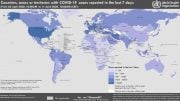
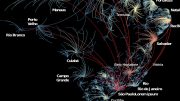
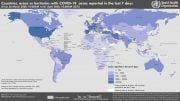
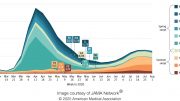
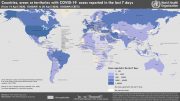
will appear in arXiv:
Covid – 19 ow, wind, stochastic perturbation
C. Udriste, I. Tevy, A. S. Rasheed
Abstract: In this paper we model the trends of the evolution of COVID –
19 infections using a SIR ow (rst order ODE system), completed
by a geodesic motion in a gyroscopic eld of forces, and a stochastic
SIR perturbation of the ow (It^o ODE system). We are interested in
mathematical aspects such as: infection ow analysis, bounds of Covid
– 19 evolution, dual description of Covid – 19 evolution, log-optimal
and rapid path, epidemic COVID – 19 wind (geometric dynamics),
stochastic equations of evolution, and stochastic connectivity. We hope
the paper is a guideline for strategizing some socio-political counter
measures to mitigate COVID – 19.
will appear in arXiv:
Covid – 19 flow, wind, stochastic perturbation
C. Udriste, I. Tevy, A. S. Rasheed
Abstract: In this paper we model the trends of the evolution of COVID –
19 infections using a SIR ow (rst order ODE system), completed
by a geodesic motion in a gyroscopic eld of forces, and a stochastic
SIR perturbation of the ow (It^o ODE system). We are interested in
mathematical aspects such as: infection ow analysis, bounds of Covid
– 19 evolution, dual description of Covid – 19 evolution, log-optimal
and rapid path, epidemic COVID – 19 wind (geometric dynamics),
stochastic equations of evolution, and stochastic connectivity. We hope
the paper is a guideline for strategizing some socio-political counter
measures to mitigate COVID – 19.